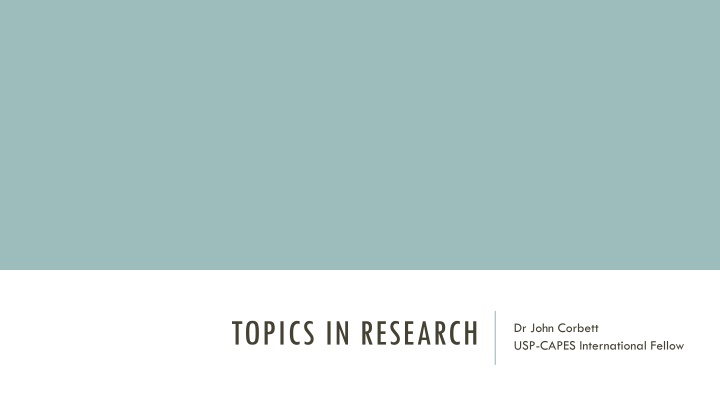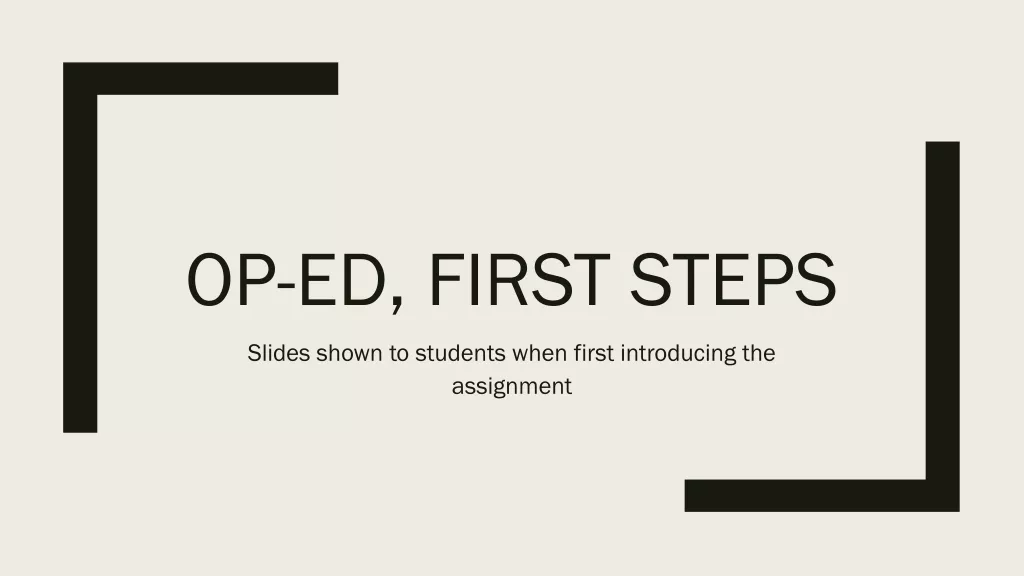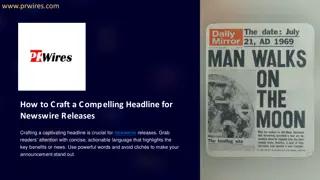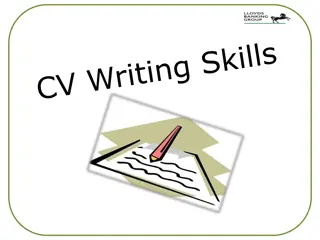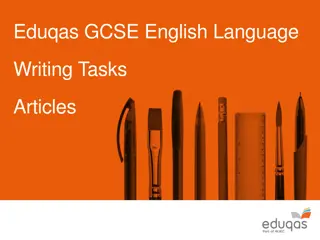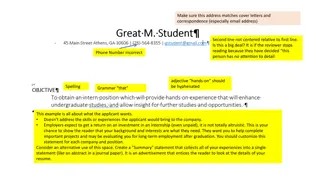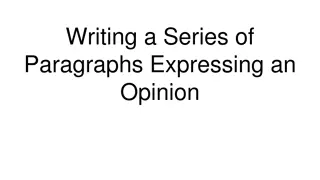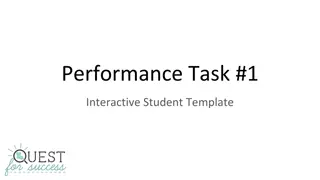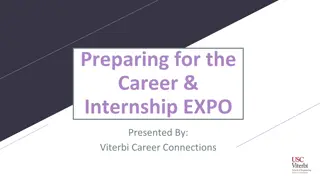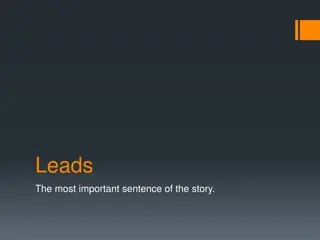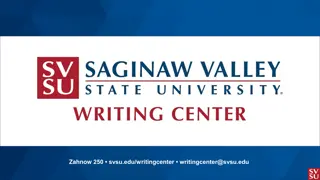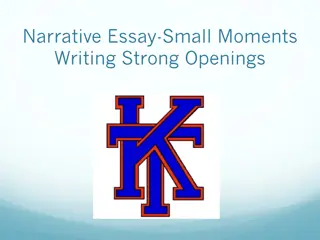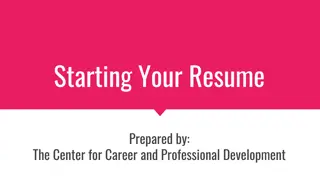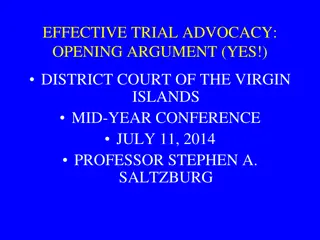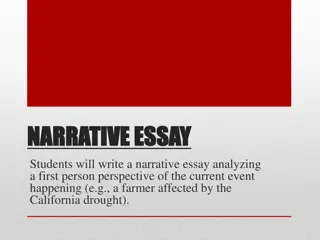Crafting a Compelling Research Article Introduction
Learn how to effectively introduce your research, establish its importance, review relevant literature, and identify gaps in previous research. Follow a structured approach to engage readers and clearly outline the purpose of your study.
Download Presentation

Please find below an Image/Link to download the presentation.
The content on the website is provided AS IS for your information and personal use only. It may not be sold, licensed, or shared on other websites without obtaining consent from the author.If you encounter any issues during the download, it is possible that the publisher has removed the file from their server.
You are allowed to download the files provided on this website for personal or commercial use, subject to the condition that they are used lawfully. All files are the property of their respective owners.
The content on the website is provided AS IS for your information and personal use only. It may not be sold, licensed, or shared on other websites without obtaining consent from the author.
E N D
Presentation Transcript
TOPICS IN RESEARCH Dr John Corbett USP-CAPES International Fellow
WRITING A RESEARCH ARTICLE: THE INTRODUCTION Creating a space for your research: Introducing your area of research & its importance Reviewing the relevant research literature Challenge or identify a gap in previous research Give the purpose of your own research
WRITING A RESEARCH ARTICLE: THE INTRODUCTION A sample research article Jakonen, T. (2018). The environment of a bilingual classroom as an interactional resource. Linguistics and Education, 44, 20-30.
WRITING A RESEARCH ARTICLE: THE INTRODUCTION The structure of the research article introduction in 3 moves : 1) Identify your research topic Point out that your research area is important, popular, or neglected) Contextualise your research by reviewing previous research 2) Challenge or extend the previous research 3) Tell the reader your aims or how your article will be structured.
MOVE 1: IDENTIFYING YOUR RESEARCH TOPIC & INDICATING ITS IMPORTANCE, POPULARITY OR NEGLECT Make a generalisation about your topic Usually simple present or present perfect Perhaps indicate that your topic is Important Topical Popular Neglected
MOVE 1: IDENTIFYING YOUR RESEARCH TOPIC (& INDICATING ITS IMPORTANCE, TOPICALITY, POPULARITY OR NEGLECT) In recent research on language and education, there has been increasing interest in the material practices of educational spaces. This interest has not only been articulated within the emerging research area of schoolscapes, that is, the visual and material features of educational spaces (see e.g. Brown, 2012; Szab , 2015), but it has also figured prominently in investigations of how (L2) learning materials are used in classroom interaction (Guerrettaz & Johnston, 2013; Jakonen, 2015; Kunitz, 2015; Tainio, 2012). Identify your research area Say something general about it. If necessary, state or imply its importance, topicality, popularity or neglect.
A KEY STEP: CONTEXTUALISE YOUR RESEARCH BY REVIEWING PREVIOUS RESEARCH While these lines of inquiry share a conviction that the material environment is an important aspect of language education, they also have substantially different research foci. Put briefly, the work on schoolscapes has its roots in research on linguistic landscapes and addresses the multimodal semiotics of public signage, focusing its investigation mainly on how such materials create and transmit language ideologies but also on how they construct specific literacy genres (for the latter, see e.g. Hanauer, 2009). Focus on studies directly relevant to your own research. Summarise the research literature (where possible, synthesize different articles and cite them together).
A KEY STEP: CONTEXTUALISE YOUR RESEARCH BY REVIEWING PREVIOUS RESEARCH On the other hand, the typical object of inquiry for conversation analytic (CA) studies of classroom interaction is social interaction itself, and, as far as (learning) materials are concerned, these studies are primarily interested in how they are used as resources for interaction in the local context of some sequentially-evolving activities Focus on studies directly relevant to your own research. Summarise the research literature (where possible, synthesize different articles and cite them together).
MOVE 2: EXPLAINING HOW YOUR RESEARCH RELATES TO THE PREVIOUS LITERATURE Identify the limitations of previous research (on the assumption that your own research will address these limitations). In this article, I attempt to bring these two domains of inquiry together to explore the schoolscape of a bilingual classroom as a material and semiotic structure that can be attended to, drawn on and made sense of in social interaction in a classroom. More specifically, I will not do what many prior schoolscape studies have already done, that is, examine classroom texts and images in and of themselves, but will instead focus the analysis on how such material resources are visibly used, engaged with and modified in classroom interaction for the purposes of providing instruction. Usually this move Identifies the limitations of previous research Challenges previous research Extends previous research by finding a gap that hasn t been explored, or doing more of the same kind of study.
MOVE 2: EXPLAINING HOW YOUR RESEARCH RELATES TO THE PREVIOUS LITERATURE An investigation of the interactional use of classroom objects provides a window into understanding how instruction is shaped by ways of navigating the material environment, being accomplished through work that involves perceiving relevancies between objects of and for instruction, and making such relevancies visible to students. Doing this addresses two kinds of research gaps in the emerging schoolscape literature. Firstly, as Brown (2012, p. 295) notes, there is a need for studies that explore the spoken component of landscapes in addition to their material counterparts . Moreover, in order to understand the specific role of learning materials in (language) education, there is a need to consider how and when talk, text and objects intersect in routine social encounters in the classroom. Lastly, within research on schoolscapes, there is a general lack of studies investigating how the ideologies that appear in texts and other materials are made relevant, received, subverted or otherwise treated by participants themselves in classroom interaction. The contribution of micro-interactional approaches such as CA for the schoolscape literature is that they can highlight the central role of mundane social action as a locus for negotiation about ideology. Identify the limitations of previous research (on the assumption that your own research will address these limitations). Usually this move Identifies the limitations of previous research Challenges previous research Extends previous research by finding a gap that hasn t been explored, or doing more of the same kind of study.
THE STORY SO FAR Research article introductions create a research space by Introducing the topic & its importance Situating your work within the framework of previous research Extending or challenging that research Finally, you introduce your own work by Simply announcing it Summarising its purpose Summarising your main findings Indicating the structure of your article
MOVE 3: PREVIEW YOUR OWN RESEARCH The present study addresses these research gaps by exploring schoolscapes in interactional use. It draws on a multimodal conversation analytic approach (Deppermann, 2013; Stivers & Sidnell, 2005) to investigate interaction within the material environment of a bilingual classroom, in situations of whole-class teaching where that environment and its objects become observably relevant for the participants. The article describes different kinds of orientations to the material environment and proposes some ways in which key aspects of the schoolscape the constitution, (re)production and transformation of ideology could be examined as interactional phenomena.
MOVE 2: PREVIEW YOUR OWN RESEARCH Ideology is a notoriously complex term that has received a tremendous amount of attention in prior linguistic and anthropological literature (for an overview, see e.g. Woolard & Schieffelin, 1994), and this study does not aim to provide a comprehensive account of it. Rather, ideology is approached in a data-driven manner with the relatively simple working definition as presumptions about languages, their speakers and other kinds of groups of people. Finally, an additional aim of this paper is to reflect upon the use of interactional methodologies for schoolscape studies and to suggest some ways in which the analysis of social interaction could be integrated in schoolscape studies.
TAKE-HOME MESSAGE Think of the introduction to your article having a 3-part structure: Identifying your area of research Reviewing the relevant research literature Explaining how your research relates to the previous literature Previewing your own article Look at the articles you have collected on LL. Do the introductions follow this pattern? If so, how closely? Note down some of the useful language in those articles that you can recycle in your own.
ACKNOWLEDGMENTS Swales, J. M., & Feak, C. B. (1994). Academic writing for graduate students: Essential tasks and skills: A course for nonnative speakers of English (English for specific purposes). Ann Arbor, MI: The University of Michigan Press.
